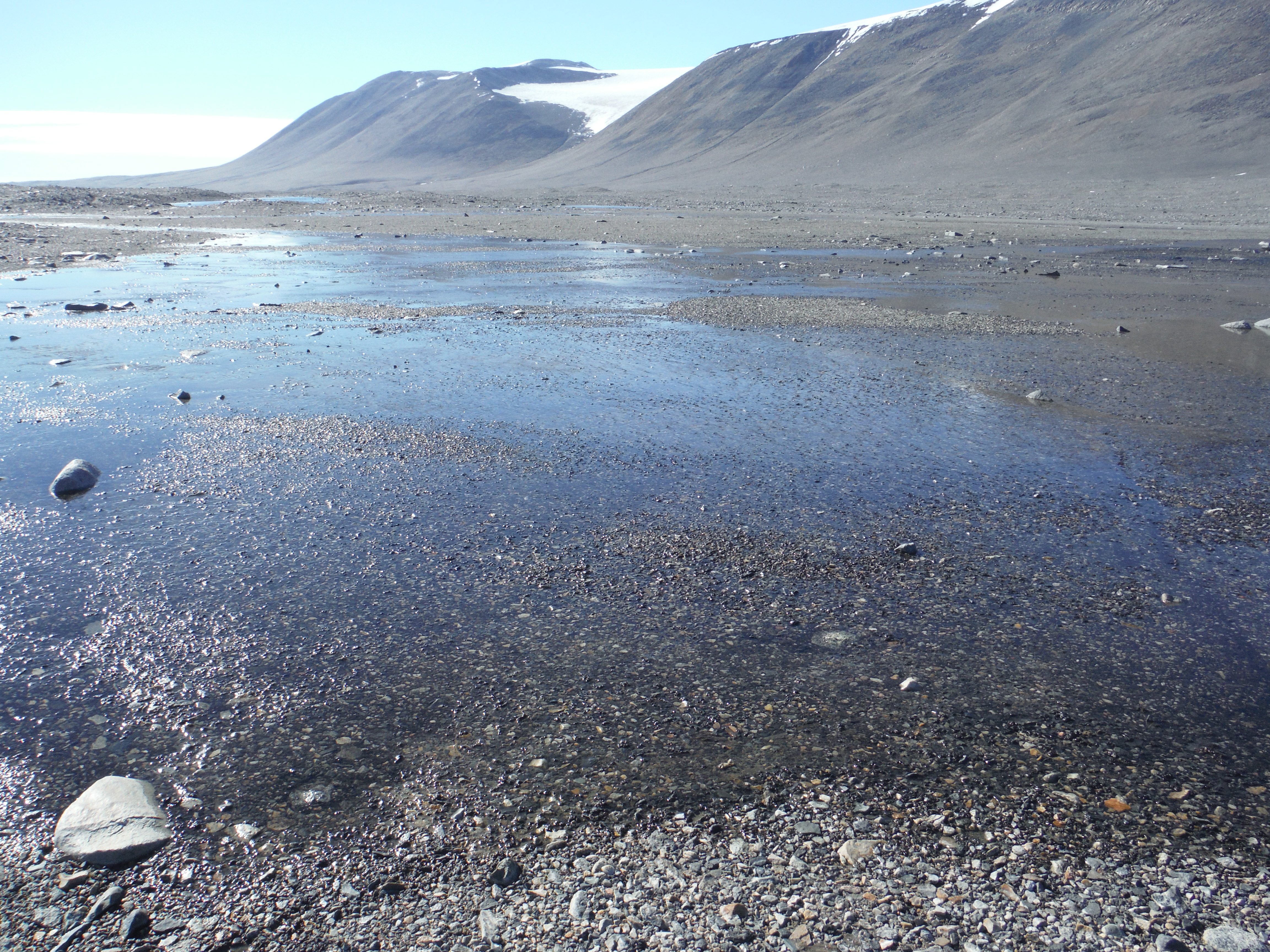Investigating microbial community dynamics in McMurdo Dry Valleys, Antarctica
The McMurdo Dry Valleys are the largest area of ice-free land in Antarctica. They are considered to be the oldest, coldest and driest deserts on Earth. In spite of the low biomass and low moisture content, the soil in the Dry Valleys contains a high diversity of microbial life. Little is known, however, about the mechanisms that drive microbial diversity and abundance in this extreme environment. During the summer, glacial melt-water streams form, supporting the development of microbial mats, composed primarily of cyanobacteria. These microbial mats are photosynthetic and some also “fix nitrogen”, meaning that they are able to use nitrogen gas in the air as a nitrogen source and convert it into biologically useful nitrogen. During winter, the mats dry out and are blown into dry regions of the valley, potentially supplying the microbial communities in the drier regions with a source of nitrogen and carbon. Previous research by our group showed that a second group of microbes, called “sulfate- reducing bacteria”, or SRB, are also involved in nitrogen fixation. While both cyanobacteria and SRB contribute to nitrogen fixation, they play very different roles in carbon cycling.
Our goals are to determine the environmental factors that drive nitrogen dynamics in this region and more fully characterize the microorganisms that are responsible for nitrogen fixation at the local, regional and landscape level.
Investigators: This project is funded by NSF and is a collaboration between Craig Cary (UD), Ed Carpenter (San Francisco State University) and Doug Capone (University of Southern California).

